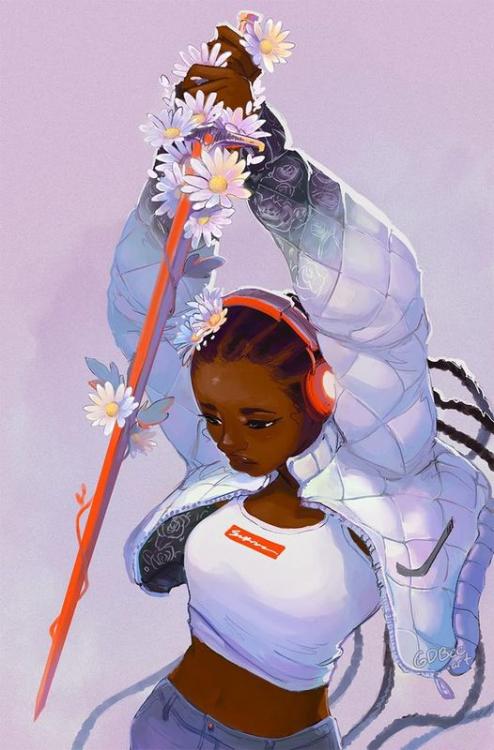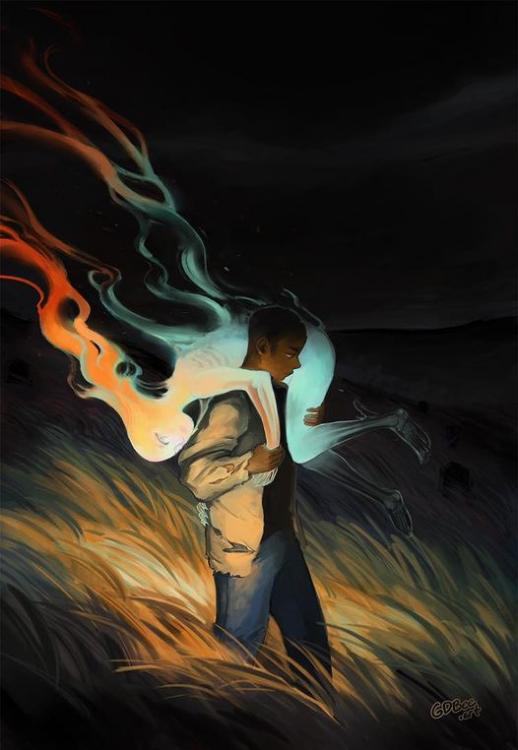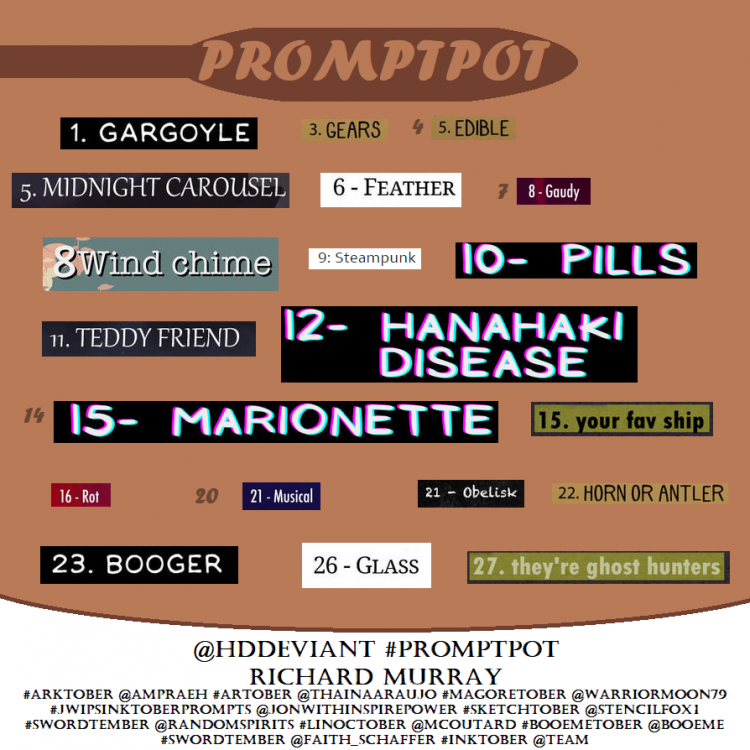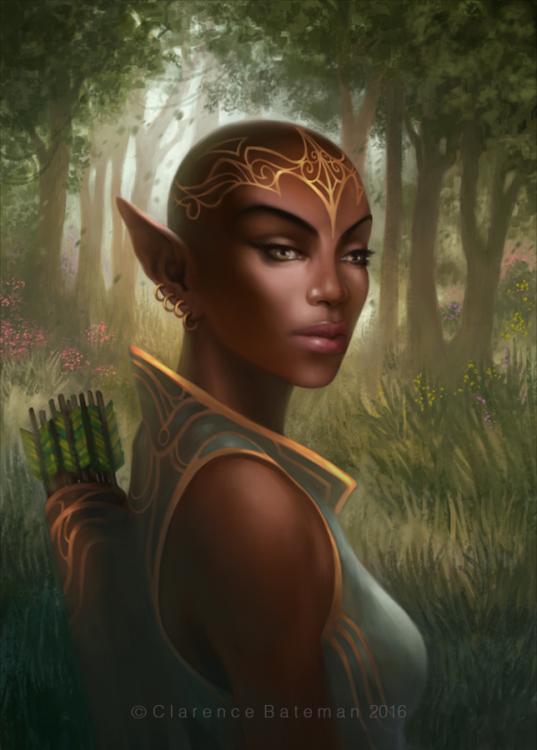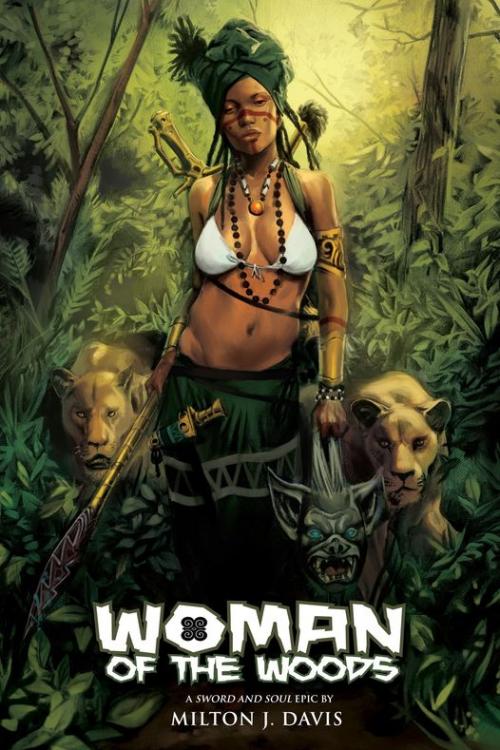-
Posts
2,407 -
Joined
-
Last visited
-
Days Won
91
Content Type
Profiles
Forums
Blogs
Events
Status Updates posted by richardmurray
-
Title: Spaceketball
Artist: GDbee < https://gdbee.store/ >
Prior post
https://aalbc.com/tc/profile/6477-richardmurray/?status=2111&type=status
GDBee Post
https://aalbc.com/tc/search/?&q=gdbee&type=core_statuses_status&quick=1&author=richardmurray&search_and_or=or&sortby=newest -
Title: Piercing
Artist: GDBee < https://gdbee.store/ >
Prior post
https://aalbc.com/tc/profile/6477-richardmurray/?status=2110&type=status
GDBee Post
https://aalbc.com/tc/search/?&q=gdbee&type=core_statuses_status&quick=1&author=richardmurray&search_and_or=or&sortby=newest -
Title: Body and Soul
Artist: GDBee < https://gdbee.store/ >
Prior post
https://aalbc.com/tc/profile/6477-richardmurray/?status=2077&type=status
GDBee Post
https://aalbc.com/tc/search/?&q=gdbee&type=core_statuses_status&quick=1&author=richardmurray&search_and_or=or&sortby=newest -

‘Is That Black Enough for You?!?’ Review: Elvis Mitchell’s Intoxicating Deep Dive into the Black Cinema Revolution of the ’70s
A critic's movie-love documentary artfully celebrates and deconstructs the decade when African-American audiences, for the first time, could see themselves onscreen.
By Owen Gleiberman
In “Is That Black Enough for You?!?,” Elvis Mitchell’s highly pleasurable and eye-opening movie-love documentary about the American Black cinema revolution of the late ’60s and ’70s, Billy Dee Williams, now 85 but still spry, tells a funny story about what it was like to play Louis McKay, the dapper love object and would-be savior of Billie Holiday in “Lady Sings the Blues.”
The year was 1972, and African-American audiences had rarely (if ever) been given the chance to gawk at a movie star of color who was not just this sexy but this showcased for his sexiness. Louis was like Clark Gable with a dash of Marvin Gaye; when he was on that promenade stairway, Williams says, with a chuckle, that he just about fell in love with himself. That’s how unprecedented the whole thing was. The actor recalls how the lighting was fussed over (we see a shot in which Louis appears bathed in an old-movie glow), and how unreal that was to him on the set. At the time, Black actors didn’t get lighting like that. But Black audiences drank it in with a better-late-than-never swoon, even as they knew that this was a representation they’d been denied for more than half a century.
“Is That Black Enough for You?!?” tells the story of Black film during a singularly creative and unprecedented time — the decade from 1968 to 1978, when Black actors, Black stories, and Black talent behind the camera exploded, in Hollywood and in the adjoining universe of independent film. The actors who came to the fore during this period are legendary: James Earl Jones, Cicely Tyson, Ossie Davis, Diana Ross, Pam Grier, Jim Brown, Tamara Dobson, Max Julien, and many more. The directors, like Gordon Parks and Melvin Van Peebles, were wily and paradigmatic game-changers. And the way that Black talent began to flow through a vast array of forms and genres — action movies, historical dramas, film noirs, musicals, close-to-the-bone indie love stories — made the Black film movement a parallel of the New Hollywood, with new voices overthrowing old strictures.
Mitchell, who wrote, directed, and narrates the film, is a veteran critic who has a unique, at times almost musical ability to nail a film’s unconscious essence. “Is That Black Enough for You?!?” is subtitled “How one decade changed the movies (and me),” and it’s very much Mitchell’s statement about what the rise of Black cinema meant to him, as a Black moviegoer born into a world where movies were still an engine of racial division. His pithy evocation of each movie — the history, the fantasy, the meaning — turns the documentary into a film fanatic’s diary that never tries to separate the importance of these movies from how each of them made him feel. As a critic-turned-filmmaker, Mitchell puts his soul right out there. His conceit is that the very existence of these movies was life-changing, because African-American moviegoers, at long last, had the catharsis of a big-screen mirror. For the first time, they could see themselves onscreen — not degraded or reductive images of themselves, but a reflection of who they were.
The beauty of the documentary is that Mitchell invites the audience to share in the transformational quality — the life force — that he experienced in Black cinema. “My grandmother,” recalls Mitchell, “told me that movies changed the way she dreamed.” That’s as perfect a summation of the power of movies as I’ve ever heard. Movies change our dreams; they change us. But who, in that formulation, gets to be the “us”?
From the start of the 20th century, white audiences could go to the movies and see themselves. Mitchell, born in 1958, grew up in the Detroit area, where he saw the tumult of the inner-city riot/insurrections of the ’60s, but where he also went to the movies to discover who he was and who he wanted to be. Early on, he takes us back to the studio-system days, where Black actors were reduced to playing hideous racist caricatures. His survey of those images — the servility of Stepin Fetchit, the odd-child-out surrealism of Buckwheat, the shocking minstrel moments that could creep into even a movie by Hitchcock — is searing, not only because of the violence of the racism that defined those roles, but because part of the racism lay in what was not being depicted: Black people in their humanity.
We know that Sidney Poitier was the actor who tore down that wall. But Mitchell, while paying due homage to Poitier’s electric intensity, focuses on another Black actor of the period — the outrageously gifted and charismatic Harry Belafonte, the Calypso singer who’d become a screen actor, appearing opposite Dorothy Dandridge in films like “Carmen Jones” (1954), but who abandoned the movies after the remarkable but mostly ignored film noir “Odds Against Tomorrow” (1959), because he couldn’t accept the roles that he was being offered. He didn’t want to be a compromised, patronized, back-of-the-bus movie star; he wanted the whole thing or nothing. Mitchell presents Belafonte as a great actor who became, for a decade, a kind of vanished specter of the star he might have been in a better world.
And then, even with those odds against tomorrow, that world began to come into being.
If you say a phrase like “the Black films of the ’70s,” the first thing that will pop into a lot of people’s heads is the word Blaxploitation. But apart from the reductive and problematic quality of that word, it simply doesn’t do justice to the astonishing range of movies that made up the Black film renaissance. Many, though far from all of them, were written and directed by white filmmakers, yet even as whites continued to commandeer the means of production, these movies became an authentic showcase for the Black experience through the existential expressiveness of the Black actors who starred in them. What those actors had, according to Mitchell, was “the self-possession that would become the core of Black film,” a quality that “created a warrior class where there hadn’t been one before.”
Liberating the films from their too-easy-to-slot-in categories, Mitchell feeds on the eclectic cornucopia of what a “Black movie,” starting in the late ’60s, could be. He explores the emotional transcendence of “Sounder” (1972). The exhilarating, dread-soaked hustler authenticity of “Super Fly” (1972). The performance of Rupert Crosse, the first Black actor to be Oscar-nominated for best supporting actor, in “The Reivers” (1969), where he sparred teasingly with Steve McQueen in a way that subverted racial power dynamics. The conspiratorial paranoia of “Three the Hard Way” (1974), about a serum dumped into the water in Black cities, which the teenage Mitchell thought was funny until his father told him about the Tuskegee Experiment. The jocular knowingness of “Cotton Comes to Harlem” (1971), with its wryly repeated catch phrase “Is that black enough for you?”
And then there’s the deliverance of the opening credits of “Shaft” (1971), a vérité epiphany in which the camera, accompanied by the snaky imperiousness of Isaac Hayes’s theme song, didn’t just follow Richard Roundtree as he walked through Times Square but worshipped him. The rebel-blues-meets-burn-baby-burn mythology of “Sweet Sweetback’s Baadasssss Song” (1971). The “early, all-out glam shower” that was “Lady Sings the Blues.” The way Duane Jones, playing the Black hero of “Night of the Living Dead” (1968), goes through the entire movie without his race being mentioned — and then, after saving the white people, gets paid back by being gunned down. The jaunty self-mockery of Poitier in “Uptown Saturday Night” (1974). The melancholy of William Marshall in “Blacula” (1972). The cowboy effrontery — and haunting commercial failure — of “Buck and the Preacher” (1972). And the clandestine complexity of “Coffy” (1973), in which Pam Grier played a woman bent on vengeance whose every lethal move is weighed down by the gravity of responsibility that’s tearing her in several directions.
“Is That Black Enough for You?!?” is built in a formally simple yet elegant kaleidoscopic way, examining one movie after another but looking at each through a different lens. Here’s how Ron O’Neal jumped a chain-link fence in “Super Fly” and why it mattered, here’s Diahann Carroll’s “core of calm” in “Claudine” (1974), here’s why “The Wiz” (1978), which should have been a crowning achievement of the Black film renaissance, turned out to be its swan song. And Mitchell never stops weaving the past — Hollywood’s and his own — into the narrative, so that we see how this era was anticipated by the career of Oscar Micheaux (who from 1919 to 1948 made 44 features), and how Isaac Hayes’ performance at the 1972 Academy Awards was, for Mitchell, as profound and transporting as any of the films he talks about.
Elvis Mitchell celebrates the moment when Black people, for the first time in movie history, had a popular culture of heroes to respond to. Which gave life, of course, to the heroism within themselves. But even as Hollywood, for the first half of the century, was defined as a place of cinematic apartheid, Mitchell argues against the glib and easy liberal separatism that would sanctify Black cinema — or Black moviegoing — as a hermetic experience. He interviews a host of Black artists, like Belafonte and Laurence Fishburne and Whoopi Goldberg and Samuel L. Jackson and the director Charles Burnett, many of whom testify to the mythology they embraced in old Westerns. They felt discriminated against but not shut out; those “white” movies were for them as well.
And Mitchell offers a head-spinning insight when he talks about the place in the larger movie cosmos that Black cinema came to occupy. During the ’70s, the American hero had gone underground, replaced by the disaffected antihero. Mitchell makes the case that Black cinema brought the hero back. “Audiences of all races came to see these movies,” he says, “because they could feel the adrenaline in the actors.” He also argues that the way Black filmmakers interwove the aesthetics of movies and pop music, down to the bold marketing idea of releasing a soundtrack prior to the movie (a tactic Van Peebles innovated with “Sweetback,” and was then repeated with such seismic soundtracks as Curtis Mayfield’s music for “Super Fly”), paved the way for the fusion of those two industries. “Saturday Night Fever,” in Mitchell’s view, was one culmination of the Black cinema renaissance, with John Travolta appropriating Black nihilistic swagger and the movie selling itself in the spirit of Black movie/music synergy. The ultimate message of “Is That Black Enough for You?!?” is that Black cinema, for all the racism of Hollywood (and America), was never separate from the cinema that wasn’t Black. How could it be? They shared the same dream space.
ARTICLE
https://variety.com/2022/film/reviews/is-that-black-enough-for-you-review-elvis-mitchell-1235396637/
P.S.
Blackwood introduction
https://aalbc.com/tc/profile/6477-richardmurray/?status=1837&type=status
Carib Gold
https://aalbc.com/tc/profile/6477-richardmurray/?status=1860&type=status
South Side Home Movie Project
https://aalbc.com/tc/profile/6477-richardmurray/?status=1882&type=statusYemenyah+ Storm and Rain the movie
https://aalbc.com/tc/profile/6477-richardmurray/?status=1981&type=statusWhy merit doesn't work and the need for communal zones of opportunity in media
https://aalbc.com/tc/profile/6477-richardmurray/?status=2006&type=statusBLACKWOOD discussions
-
Pulitzer prize-winning playwright Charles Fuller dies at 83
October 4, 20224:07 PM ET
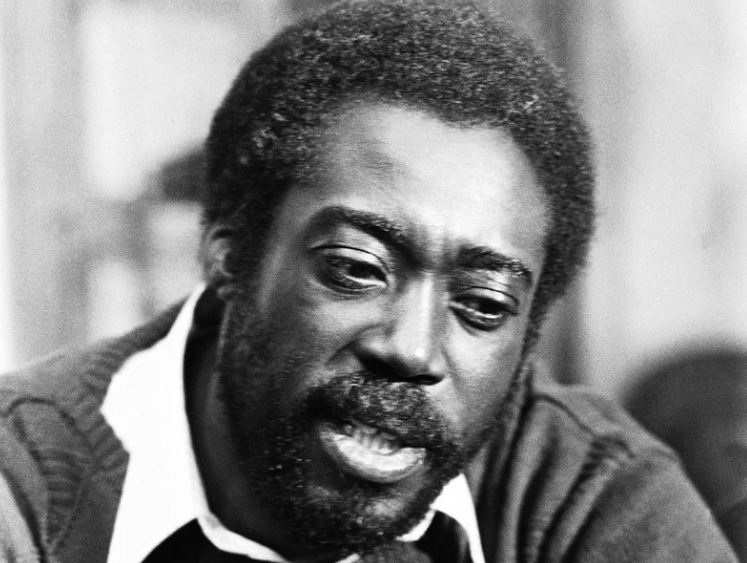
Bill Ingraham/AP
NEW YORK — Charles Fuller, the Pulitzer Prize-winning playwright of the searing and acclaimed "A Soldier's Play" who often explored and exposed how social institutions can perpetuate racism, has died. He was 83.
Fuller died of natural causes on Monday in Toronto, said his wife, Claire Prieto-Fuller.
Fuller's plays were filled with complex characters and an undercutting of conventions. "The best way to dispel stereotypes and massive lies is telling something as close to the truth as you can," Fuller told Newsday. In one review of his work, The New York Times said "clichés of form, plot and character shatter like skeets at a shooting range."
Fuller's most famous work, "A Soldier's Play," used a military setting in its tale of the search for the murderer of a Black sergeant on an Army base in Louisiana during World War II. It dissected entrenched racism as well as internal divisions in the Black military community, wrapping it in a murder mystery.
The play won the Pulitzer Prize for drama in 1982 and two years later was made into the Oscar-nominated best picture "A Soldier's Story," for which Fuller wrote the screenplay and earned an Oscar nomination.
"I'd just like to be considered a playwright fortunate enough to have written a 'hit,' and who wants to keep on writing plays that break through the wall,″ he told The New York Times in 1982.
The work has attracted a who's who of Black acting talent. The film version starred a young Denzel Washington, who had appeared in its first stage incarnation in New York alongside Samuel L. Jackson. A 2005 revival off-Broadway lured Taye Diggs, Anthony Mackie and Steven Pasquale.
It made its Broadway debut in the pandemic shortened season of 2020-21 with David Alan Grier and Blair Underwood and earned seven Tony nominations, including best play revival. Grier won the Tony for a featured actor and the play won best revival.
"It has been my greatest honor to perform his words on both stage and screen, his genius will be missed," Grier tweeted in mourning.
Born in Philadelphia, Fuller attended Villanova University and then joined the Army in 1959, serving in Japan and South Korea. He later studied at La Salle University.
He was working as a housing inspector in Philadelphia when the McCarter Theater in Princeton, New Jersey, mounted his drama ″The Perfect Party,″ which moved off-Broadway in 1969. The theme was intermarriage, but Fuller joked "it was one of the world's worst interracial plays."
Fuller wrote plays for the Negro Ensemble Company, and his works were mounted at New Federal Theater and Henry Street Settlement. His breakthrough came with "The Brownsville Raid," which told the true story of Black soldiers who were dishonorably discharged in 1906 after they were wrongly accused of murder. Only decades later did the Army exonerate them.
Five years after "The Brownsville Raid," Fuller used similar themes and settings in "A Soldier's Play," for which he was influenced by Herman Melville's "Billy Budd." Both novels were set in the military during wartime, but Fuller used the structure to discuss race in modern America.
In its 2005 review of the play, The New York Times said Fuller "uses clean-lined conventions to elicit disconcertingly blurred shades of racism, resentment and self-hatred among Black men waiting to fight in a white man's Army," adding, "These feelings are messy, confusing, contradictory." (In the play, one Black sergeant welcomes the jailing of a Black private: "one less fool for the race to be ashamed of.″)
Fuller said he was drawn to the military in his plays because, "historically, it's the only place where Black men have risen equal to white men," he told Newsday in 1988.
Another of his more successful plays was the 1980 domestic drama "Zooman and the Sign," which is about an ex-prizefighter whose 12-year-old daughter is killed while playing. None of his neighbors will come forward to identify the murderers. When the father puts up a sign asking for help, it attracts the press. But that makes him — not the killers — a neighborhood pariah.
The New York Daily News called the play in a 2009 revival as "powerfully plain-spoken, if less than subtle." Chadwick Boseman played Zooman in 2000 at age 23 in Lancaster, Pennsylvania. Fuller wrote a made-for-TV movie of the play in 1995.
Fuller also produced a cycle of Civil War-era plays that included "Sally," "Prince," "Jonquil" and "Burner's Frolic." His other works include the coming-of-age drama "The Sky Is Gray" for PBS and "A Gathering of Old Men" for CBS in 1987.
Fuller returned to the topic of the military with the play "One Night..." in 2013, which centered on a former Army truck driver whose life has unraveled since she went public with charges of rape against three fellow servicemen in Iraq. In one scene, she asks the Veterans Affairs Department for disability benefits. "Why am I a hero if I die," she says, "and a nuisance if I live?"
In addition to his wife, Fuller is survived by a son, David, a daughter-in-law, four grandchildren; and three great-grandchildren.
ARTICLE
https://www.npr.org/2022/10/04/1126807545/playwright-charles-fuller-dies-83
My Thoughts
Great play , my relatives who served in the commonly called second world war, verified or clarified various elements of the play. Its message about anger, retribution, black vs white in the usa military is... modernly poignant
PS
Kindred from Octavia Butler is coming to a screen, December 13th on Hulu
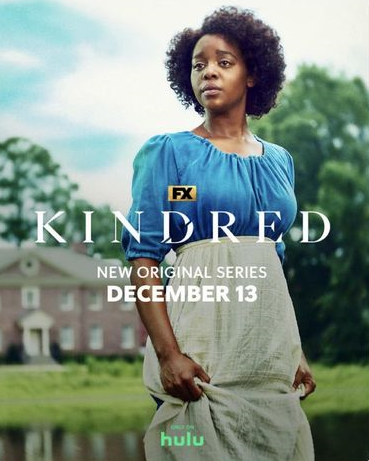
-

ALL HALLOWS TALES
The Contest
This is a Halloween-inspired, Literature-only contest asking for submissions of PROSE FICTION.
This year, you will be writing stories around the theme of major life changes. We'll be looking for new beginnings grounded in reality i.e. any supernatural, fantasy or sci-fi element should not in itself be the change. You know what I mean: the kind of thing that happened to Harry Potter (coming into magical powers) or Katniss Everdeen (being overtaken by the events of a dystopian society) will not fit the theme of the contest. Of course, what extraordinary things come of that ordinary life change could be absolutely anything...
What kind of story you write - and what you choose to write about - is up to you, but please remember that this is a Halloween contest. We're looking for pieces that are scary, disturbing, morbid, chilling, creepy, thrilling, suspenseful, ironic, satirical, or even darkly funny. Halloween, most of all, is supposed to be fun. Your entry should be entertaining to read, regardless of all else. So have fun with it!
How to Enter
When you have completed your story, save it as a Literature deviation (no journals) and send a note to [@ThornyEnglishRose] with a link to your entry, and AHT Contest Entry in the subject line. [S]he will then save it to an Entry Gallery. Please be aware that your entry is fair game for judging as soon as it is placed in the Entry Gallery, so make sure it's good to go!
Sending me a link via the Chat would also be acceptable.
Rules
Deadline is 11:59 PM Tuesday night, October 25 (GMT+1). This does give you several hours fewer than Jay allows; if that becomes an issue, contact me and we'll see if I'm feeling lenient! Winners will be announced on October 31 (bar unforeseen circumstances).
One entry per person. Judges are not eligible to enter.
Maximum word count is 3,000. No exceptions. Don't even ask.
Entries must be written in English. Entries must be new pieces posted after the contest begins.
Entries earning Daily Deviations or major features before the end of the contest will be disqualified. No fan-fiction will be accepted.
The official judging period will be the week after the contest deadline. HOWEVER, judges will be encouraged to read and score the entries as they come in. Please be aware that your entry is fair game for judging as soon as I place it in the entry gallery, so don't send it to me until you're ready for it to be judged!
-

Remember CD album artwork? Well, what if you or your OC (original character) made an album? What would the album cover look like? What kind of music would they make? Take a look online at examples of CD and vinyl record album covers you like and show us what you or your OC would make of it!
Want an extra challenge?
Provide a track listing!
Design the actual CD/record!
Link to various songs that inspired your album!
How Do I Participate?
Watch TsaoShin to keep up with challenge updates!
Create a new artwork of an album artwork inspired by you or your OC!
Submit your piece on DeviantArt with the tag #albumyourself
Submit your work no later than Midnight ET October 31, 2022
https://www.deviantart.com/tsaoshin/journal/Album-Yourself-Challenge-931733020
P.S.
The entries so far:) enjoy the art
https://www.deviantart.com/tag/albumyourself
-
Create a beast
ok
The template
Layout your lair, coming soon
-


build a beast- each monday a new prompt, this is the first
intro
https://art.tumblr.com/post/696465058808676352/greetings-tumblr-it-is-we-tumblr-as-our
first week
https://art.tumblr.com/post/697097342819696640/salutations-stooges-it-is-time-to-build-your
tag
https://art.tumblr.com/tagged/build a beast
a featured entries
https://emilylorange.tumblr.com/post/697113051011383296/
https://art.tumblr.com/post/697189884050505728/meet-the-artist-ampreh-howdy-im-ampreh-i-am-a
https://alexsketches.tumblr.com/post/697099344845897728/
https://markmefistov.tumblr.com/post/697193022251778048/
https://moonamayillu.tumblr.com/post/697109273512165376/hi-yall-ive-been-invited-this-year-to
https://fraanz.tumblr.com/post/697168035115597824/
https://purple-clock-art.tumblr.com/post/697118329622642688/
https://lemonglop.tumblr.com/post/697128045076676608/
https://fourbrickstall.tumblr.com/post/697369286911639552/
https://ir-dr.tumblr.com/post/697103040430440448/day-3386-3-october-2022-lil-werebunny-beastie
https://nuhmarika.tumblr.com/post/697375994193051648/
https://alanahsart-blog.tumblr.com/post/697135938932031488/
https://mystery-of-arkham-asylum.tumblr.com/post/697314330356711424/
https://dmblondiecheerleader.tumblr.com/post/697232518484770816/ -

-
-
10-08-2022
The NYPD , nearly half of all crimes is grand larceny. rand larceny is up 21.3
But NYC is broke, the city needs a better internal financial situation and doesn't have it...
The point being , the NYPD , not Black people like me, have said, the biggest problem today is crime by theft. Not people being attacked in the subway for non financial reasons.
Some says 1 person has made 31 shoplifting arrest. The question is, why don't they offer him a job.
-
My DTIYS for Chrissabug 10,000 followers on deviantart
https://www.deviantart.com/hddeviant/art/Chrissabugdtiys10k2022-Invitation-932158374Poem: THe Truth To The Green Woman Legend
Author: Richard Murray
https://www.kobo.com/us/en/audiobook/the-truth-to-the-green-woman-legendColored version of Chrsisabugdtiys 10k invitational
https://www.deviantart.com/hddeviant/art/Chrissabugdtiys10k2022-colored-version-932273345showcase
I am 1:38:13 to 1:39:06
-

Colored version of Chrsisabugdtiys 10k invitational
https://www.deviantart.com/hddeviant/art/Chrissabugdtiys10k2022-colored-version-932273345showcase
I am 1:38:13 to 1:39:06
-
-
My query
question, how many people in NYC prison or NYS prison system will be pardonable if marijuana possession cases are pardoned? or does state/city law override?
from Olayemi
To give credit where it’s due, if Biden actually removes marijuana from the federal schedule of drugs and pardons marijuana possession cases, that’s a significant step in the right direction.
-
My query
question, how many people in NYC prison or NYS prison system will be pardonable if marijuana possession cases are pardoned? or does state/city law override?
from Olayemi
To give credit where it’s due, if Biden actually removes marijuana from the federal schedule of drugs and pardons marijuana possession cases, that’s a significant step in the right direction.
How significant is the question
-
Promptpot - a collage of prompts
The following is mine
https://www.deviantart.com/hddeviant/art/Promptpot-931555529
This is the Promptpot explanation
https://www.deviantart.com/hddeviant/art/PROMPTPOT-931556698- Show previous comments 7 more
-

Day14
Marionette of Promptpot 01 - I thought of a marionette in reverse. From the ground to above.
https://www.deviantart.com/hddeviant/art/Promptpot2022Day14-933290001Day 15
Your Fav Ship of Promptpot 01 - Not my favorite, but a ship I always felt I wish I could had a hand in designing... the land boat from the film , age of dragons..
https://www.deviantart.com/hddeviant/art/Promptpot2022Day15-933290278Day 16
Rot of Promptpot 01 - Well, rot is decomposition. Where carbon based lifeforms, like humans, deteriorate. Carbon based lifeforms give off carbon dioxide. Can you tell what is going on?
https://www.deviantart.com/hddeviant/art/Promptpot2022Day16-933290543 -

-

day 21
https://www.deviantart.com/hddeviant/art/PromptPot2022-Day21-935153441
day 22
https://www.deviantart.com/hddeviant/art/Promptpot2022Day22-935154480
day 23
https://www.deviantart.com/hddeviant/art/Promptpot2022Day23-935154930
day 26
https://www.deviantart.com/hddeviant/art/Promptpot2022Day26-935155720
day 27
https://www.deviantart.com/hddeviant/art/Promptpot2022Day27-935155971
extra ingredient
https://www.deviantart.com/hddeviant/art/Promptpot2022ExtraIngredient-935156720
-
Black Lucy and The Bard
Premiere: 9/16/2022 | 01:24:17 |
Explore Shakespeare’s love life through the perspective of the “Dark Lady” in this work from Nashville Ballet based on poetry by Caroline Randall Williams and featuring an original score by GRAMMY winner Rhiannon Giddens.
Transcript is on the page
https://www.pbs.org/wnet/gperf/black-lucy-and-the-bard-about/13909/#full_length1

-

The Epps will buy and fix up houses in Indianapolis , the city he was raised in. I get the message to black people with money who are from financially leaner statuses, to go back to the communities they left and become real estate barons ala Generational wealth. I will never forget when berry gordy moved motown to los angeles. He spent so much money to make motown a multimedia entertainment firm based in los angeles... he could had spent all that money in detroit to do the same thing and would had a greater influence on detroit long term...and many musicians left him for that move too. so... I get the epps point. I wonder who will live in the epps homes? If this show is "buying back the block" then the sequent reality show needs to be "living on the block" . Epps couple buying and fixing homes is only one part of the story, the next is who lives in those homes? What is their rent? Reality T.v. is so unreal.
https://www.blackenterprise.com/mike-epps-and-his-wife-partner-with-hgtv-for-buying-back-the-block-in-indianapolis/
-
We were Hippies from John Amos, did the country road guy hear this once?
Happy Belated birthday, still love his character in the beastmaster film. The beastmaster is a book written by a white man about an indigenous man who is a space traveler who talks to non humans on mars... so the beastmaster in the film is its own creature completely.
John AMos:)John Amos in his 1958 East Orange High School yearbook photo.
John Allen Amos Jr. (born December 27, 1939) is an American actor known for his role as James Evans, Sr., on the CBS television series Good Times. Amos's other television work includes The Mary Tyler Moore Show, a recurring role as Admiral Percy Fitzwallace on The West Wing, and the role of Washington, D.C., Mayor Ethan Baker in the series The District. Amos has appeared on Broadway and in numerous films in his five-decade career. He has been nominated for a Primetime Emmy Award and an NAACP Image Award. On film, he has played numerous supporting roles in movies such as The Beastmaster (1982), Coming to America (1988), Die Hard 2 (1990) and Coming 2 America (2021).
John A. Amos, Jr. Was born in Newark, New Jersey. He grew up in East Orange, New Jersey, and graduated from East Orange High School in 1958. He enrolled at Long Beach City College and graduated from Colorado State University, qualifying as a social worker with a degree in sociology. Amos also played on the Colorado State Rams football team. After college, he was a Golden Gloves boxing champion.
In 1964, Amos signed a free agent contract with the American Football League's Denver Broncos. Unable to run the 40-yard dash because of a pulled hamstring, he was released on the second day of training camp. He then played with the Canton Bulldogs and Joliet Explorers of the United Football League. In 1965, he played with the Norfolk Neptunes and Wheeling Ironmen of the Continental Football League. In 1966, he played with the Jersey City Jets and Waterbury Orbits of the Atlantic Coast Football League.
In 1967, Amos signed a free agent contract with the American Football League's Kansas City Chiefs. Coach Hank Stram told him, "You're not a football player, you're a man who is trying to play football." He returned to the Continental League, where he played that year with the Victoria Steelers.
➡From a graduation speech by John Amos in 1987 at Drew University:
"I really didn't decide on an acting career until after I had exhausted just about every other job possibility in the world. I'd been a truck driver, a garbage man, right in the streets of East Orange, a job that I got immediately after graduation that was to be a summer job. And I found I was capable of doing a job society looks on as being demeaning, but to do it with a certain amount of pride.
It was ``Roots,'' and the character of Kunte Kinte, that gave me the greatest satisfaction as an actor, and as an Afro-American. While attending grade school here in New Jersey, Stockton School, and Columbian Junior High, I was given the unique opportunity of being one of a small group of black students that integrated both those."
Amos became well known in his first major TV role, playing Gordy Howard, the weatherman on The Mary Tyler Moore Show, from 1970 until 1973.
In 1971, he appeared with Anson Williams in a commercial for McDonald's.
He is best known for his portrayal of James Evans, Sr., the husband of Florida Evans, first appearing three times on the sitcom Maude before continuing the role in 61 episodes of Good Times from 1974 to 1976. Although cast as a hard-working middle-aged father of three, Amos was 34 when the show began production in 1973, only eight years older than the actor who played his oldest son (Jimmie Walker) and 19 years younger than his screen wife (Esther Rolle).
He has guest-starred in a number of other television shows, including Police Story, The A-Team, The Cosby Show, The Fresh Prince of Bel-Air, In the House, Martin as Sgt. Hamilton Strawn (Tommy's father), Touched by an Angel, Psych, Sanford And Son, My Name Is Earl, Lie to Me, and Murder, She Wrote. He has also appeared as a spokesman for the Cochran Firm (a national personal injury law firm).
Amos wrote and produced Halley's Comet, a critically acclaimed one-man play that he has performed around the world. Amos performed in August Wilson's Gem of the Ocean on Broadway and later at the McCarther Theatre in Princeton, New Jersey.
Amos starred in the TV Miniseries Roots, as the adult Kunta Kinte, based on the book and real life family history of author Alex Haley. Amos was featured in Disney's The World's Greatest Athlete (1973) with Tim Conway and Jan-Michael Vincent, and also starred as Kansas City Mack in Let's Do It Again (1975) with Bill Cosby and Sidney Poitier. His other film appearances include Vanishing Point (1971), The President's Plane Is Missing (1973), Touched by Love (1980), The Beastmaster (1982), Dance of the Dwarfs (1983), American Flyers (1985), Coming to America (1988), Coming 2 America (2021), Lock Up (1989), Two Evil Eyes (1989), Die Hard 2 (1990), and Ricochet (1991). He appeared in the 1995 film For Better or Worse and played a police officer in The Players Club (1998). He played Uncle Virgil in My Baby's Daddy (2004), and starred as Jud in Dr. Dolittle 3 (2006). In 2012, Amos had a role in the movie Madea's Witness Protection, as Jake's father. He also appeared in Ice Cube and Dr. Dre's 1994 video for "Natural Born Killaz."
In 2009, he released We Were Hippies, an album of original country songs by Gene and Eric Cash.
In 2021, Amos starred in Because of Charley, as the patriarch of an estranged step-family riding out the hurricane that tore through Florida in 2004.
AWARDS
In addition to his Emmy nomination for Roots, Amos has also been nominated for a CableACE award, an NAACP Image Award, and a DVD Exclusive Award. Amos has won three TV Land Awards, taking home trophies for his roles on The Mary Tyler Moore Show, Good Times and the TV miniseries Roots.
In 2020, Amos was inducted into the New Jersey Hall of Fame.
**Amos was a member of the 50th Armored Division of the New Jersey National Guard, and he also became an honorary master chief of the U.S. Coast Guard.
#veterans
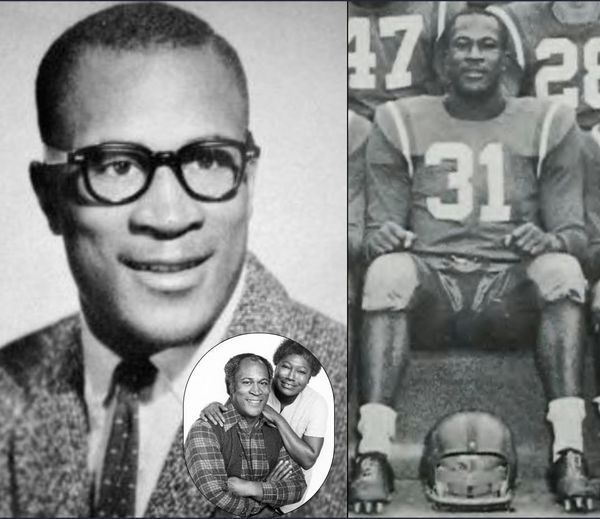
-
I finished Witchtember , tell me which day you liked the most, an art work a day for the entire month of september
https://www.deviantart.com/hddeviant/gallery/84411925/witchtember-2022

-
Shoka Tutorial
Basic version
https://www.deviantart.com/hddeviant/art/Shokashorttutorialvideo-931410714Six sided
https://www.deviantart.com/hddeviant/art/Shoka-Tutorial-basic-or-six-sided-931415393
-
I must admit the tools on Deviantart are good for all artists to monetize in various ways in one space, or e - ecosystem
Your thoughts?
https://www.deviantart.com/team/art/DeviantArt-Presents-I-ChrissaBug-931238577
-

CCayco < https://www.deviantart.com/ccayco > was invited by a comic convention and he was able to take something off his bucket list
-
-
Everyone lets congratulate Clarence BAteman , an artist I have been connected too for some time on being a first quater winner for illustrators of the future
THE ANNOUNCEMENT
https://www.deviantart.com/clarencebatemanart/art/Illustrators-Of-The-Future-Contest-Semi-Finals-931292323Here is an example of his lovely work, entitled Elf
https://www.deviantart.com/clarencebatemanart/art/Elf-742690053
-

Source: New York Daily News / Getty
OP-ED: Why Is Rikers Island Still Open And Why Won’t NYC Mayor Eric Adams Accept The Help He Needs?
Adams continues to oppose bail reform and asks lawmakers to pass more restrictive laws that would increase Rikers' already sky-high population, as well as appoint more “tough on crime” judges.
Written By Olayemi Olurin
Rikers Island is out of control and New York City Mayor Eric Adams‘ actions suggest he would like it to remain that way.
Rikers is New York City’s infamous pre-trial detention center where Black and brown New Yorkers have been terrorized since 1932. A lesser-known fact is that the people held there have not been convicted of a crime, they many times simply do not have the money to purchase their freedom and fight their case from the outside.
New York City is one of the largest and most diverse cities in the world. There are almost 9 million people crammed into this little city, over 41% of whom are white. Yet over 90% of the people held at Rikers are Black or brown.
In 2019, the Campaign to Close Rikers emerged and advocates introduced a plan to shut it by reducing the jail’s population to 3,300 and closing the additional run-down city jails committing the same abuses against the people within it. A third measure would divert the $1.8 billion that would be saved annually by lowering the population to 3,300 into housing, healthcare, education, economic development and youth services in poor communities.
Adams promised that if elected, he would support former Mayor Bill de Blasio’s plan to close the jail altogether and to create “systemic change.” Adams has now expressed skepticism about the plan to close Rikers by 2027.
His argument is that too many people are incarcerated at Rikers for them to close the jail by then … because where would we put all these people who haven’t been convicted of a crime while they await their trial. I imagine we could put them in the same place we put rich people accused of crimes—their homes—but let’s explore his argument.
Built to only hold 3,000 people, Rikers contains approximately 5,500 people. The packed cells and worsening deaths, abuse, violence and illness are also evidence of how cash bail has been weaponized against the poor to deprive them of their rights.
New York City’s landmark bail reform addressed this issue by eliminating cash bail for most misdemeanors, low-level offenses and nonviolent crimes. In turn, Rikers’ population was drastically reduced, a necessary step to closing the jail.
According to the New York City Comptroller’s office < https://comptroller.nyc.gov/newsroom/nyc-comptrollers-office-analysis-finds-bail-continues-to-drive-pretrial-detention-despite-reforms/ > , there was been essentially no change in the monthly percentage of people rearrested while released pending trial after bail reform. And yet, unfounded fearmongering by people like Adams brought about rollbacks that rose the population about 7 to 11%.
Adams continues to oppose bail reform and asks lawmakers to pass more restrictive laws that would increase Rikers’ already sky-high population, as well as appoint more “tough on crime” judges.
That is not the conduct of someone who has any interest in lowering the jail’s population to facilitate its closing, despite acknowledging it is already thousands of people too high and has caused deaths, violence, suicide and rampant abuse. He’s also fighting off calls for a receivership.
For the last six years, federal judge Laura T. Swain has tried and repeatedly failed to muscle New York City into getting Rikers under control. She even appointed a monitor for the prisons. Still, the city has demonstrably failed to comply with every mandate and deaths continue to mount. Advocates have asked the court to place Rikers under receivership.
A receivership would allow the court to appoint a non-partisan expert who is given wide latitude to address the crisis and be answerable only to the court, and not state and local laws and bureaucratic agencies, allowing them to make progress in ways the city personnel could not. Once brought up to constitutional standards, the control of Rikers would then return to the state and locality.
Under Eric Adams’ leadership, Rikers already has 15 deaths — just one death shy of 2021’s 16-person death toll, which was the highest death toll since 2013. People continue to be held in solitary confinement conditions despite a law outlawing it, which Adams dismisses as “restrictive housing,” and the level of depraved indifference on the part of the Department of Corrections has reached unprecedented heights.
Most recently, video footage emerged of three corrections officers standing and watching Michael Nieves, a man incarcerated in Rikers’ mental health unit, bleed to death for 10 minutes after slitting his throat with a razor blade he’d been given. Last week, a corrections officer placed Kevin Bryan inside of a staff bathroom where he hanged himself from a pipe.
In March, Herman Diaz choked to death on an orange while other incarcerated people unsuccessfully begged officers to intervene. Three months later, Antonio Bradley hanged himself inside a holding cell, But Adams chose not to inform the U.S. Department of Justice of the in-custody death, preventing the federal government from sending someone down to launch an investigation until much later.
“I don’t see that as a coverup or a violation of any rule,” Adams said, responding to allegations of a cover-up. “If it is, we will definitely correct it. But my understanding is that a place of death is where they died.”
You cannot simultaneously recognize that a jail is so out of control that it needs to be closed entirely and still insist that you’re capable of managing it. Yet, that’s the exact message Adams continues to push to New Yorkers.
The systemic change Adams promised must’ve been radical with depraved indifference to human life because not only have conditions at Rikers persisted, they’ve worsened. It’s time for Rikers to be placed under receivership.
Olayemi Olurin is a public defender, movement lawyer and political commentator in New York City.
ARTICLE
https://newsone.com/4417432/why-is-rikers-island-still-open/
MY THOUGHTS
I want to first quote Olayemi
Over 30 people have died in Rikers since last year. Rikers was only built to hold 3000 ppl so why are are over 5000 people who haven’t been convicted of a crime being held there despite Rikers being declared a human rights crisis?
I said in reply to her
I read the article on @newsone from @msolurin the statistical support she uses is verified beyond her and beyond satisfactory to her position on Eric Adams and Rikers relationship to NYC
...
When Eric Adams campaigned for mayor he had one platform, one issue that gave way to no other. NYC is unsafe. The problem with that platform in a global city is the size of the city will always provide instances or moments, regardless of their statistic uncommonality(1/5) , that can be used to suggest a lack of safety regardless of the truth. Sequentially, once mayor, Eric Adams has in NYC's media a constant highlighter of instances. He has in NYC's population, a constant source of instances. He has in each of NYC's (2/5)various communities: black/white/christian/muslim/young/old or other constant support by some people who always view NYC as at the precipice of being swallowed by crime. Thus, even though you prove your position (3/5)through statistics others gathered honestly and your position shows a truth that is not contestable with common sense, the support for Adams position in NYC is too large for him to ever be swayed to change. (4/5)The only way Rikers or the legal system en large in NYC will be influenced more positively from the mayors office at this point will be a new mayor.(5/5)
In conclusion
Olayemi's position is correct. But the problem is undoing it is more than merely policy. The populace in NYC has two group of people in NYC, both multiracial in composition, that give any elected official on a "keep nyc safe" platform solid support. The first is people who have a heritage of positioning NYC's biggest issue as crime. Various religious groups, community groups, primary purpose is the lessening of crime in NYC, even if the statistics show crime is lessening or crime is not as potent, said organization's goal is zero crime, which in a fiscal capitalistic city with more than one million is impossible, let alone ten million. The second is the financial profiteers to the industry of prisons in NYC. The NYPD profits with bigger salaries, which helps their larger union coiffeurs, or better facilities, let alone the various money the nypd gets in concert with illegal activity that is fueled with a large prison populace. The Real Estate industry profits cause their goal is a city of wealthy people, that is the goal for the real estate industry in NYC. But to achieve that, the city also needs poor people for various small labors that machines can't do. But, to be fair to the poor you have to lower the rent. If you keep the rent high, the poor in desperation will commit crimes. The legal system of the city acquires millions in bail money side other fees for the processing of the penal system. The various charity organizations that benefit from money sent to them with the size of the prison populace as a convincer to fiscally wealthy people who want to prove their goodness. Many profit off of the prison system in New York City. White/Black/Young/Old many and many other people have no desire to get rid of rikers cause the profit from it. And regardless of how they feel about Eric Adams, whether they like him or not, they will support their fiscal benefit. Eric Adams comprehended this when he initially campaigned for mayor and he knows the fiscal have's in the city are in majority supportive and the fiscal have not's , even if in majority opposed, can be ignored for the lack of a candidate who will have a platform based on what people like Olayemi suggest.
To read more of my prose to socio-politics consider my pulpit, click the highlighted links below.
The Right To Bear Arms Link
The series: Link
Support article
NYC Comptroller’s Office Analysis Finds Bail Continues to Drive Pretrial Detention, Despite Reforms
March 22, 2022
Data Shows No Change in Share of People Rearrested While Awaiting Trial in the Community, Even As Reforms Reduced the Number of People Subject to Bail.
Comptroller Lander Calls for Albany to Reject Rollbacks and Instead Strengthen Implementation.
New York, NY – Despite reforms that have meaningfully reduced the number of people subject to bail, bail-setting continues to drive pretrial detention and syphons money from low-income communities of color, according to a new analysis from the NYC Comptroller’s office. The share of people released pretrial who are rearrested for a new offense has not changed following the implementation of bail reforms.
While judges set bail in 14,545 cases in calendar year 2021, down from 24,657 in 2019, defendants and their friends and family still posted $268 million in bail, up from $186 million in 2020. The data on the impacts of the 2019 bail reforms shows that, despite new requirements to consider the ability of defendants to pay in those cases where bail still applies, a full two years into implementation, the 2019 reforms have neither made bail more affordable nor prevented incarceration for those still subject to bail setting.
Even as the number of people subject to bail has declined, there has been no increase in the number or percentage of people who are rearrested for a new offense while awaiting trial in the community. In January 2019, 95% of people awaiting trial in the community were not rearrested that month, while that proportion rose slightly to 96% in December 2021. Both before and after bail reform, fewer than 1% of people released pretrial, either through bail or otherwise, were rearrested on a violent felony charge each month.
Rather than roll back critical reforms, the Comptroller’s office urged Albany legislators to strengthen implementation and invest in programs that prevent crime and promote community safety.
“In a moment of real anxiety about public safety, the conversation on bail reform has become divorced from the data, which shows essentially no change in the share of people rearrested while released pretrial before and after the implementation of the 2019 bail reforms,” said Comptroller Brad Lander. “Instead, what we see is a rise in average bail amounts and a continuation of bail-setting practices that extract money from families and deny freedom to people who are presumed innocent before trial. We should follow the facts rather than fear, and reject reactive efforts to roll back reforms that threaten the progress we have made towards more equal justice. Our system has put a high price on freedom and made bail a barrier to justice for those who cannot afford to pay.”
The Office of the New York City Comptroller analyzed data provided by the New York State Office of Court Administration on bail setting and bail made, as well as data on pretrial release outcomes from the New York City Criminal Justice Agency during calendar years 2019, 2020 and 2021 to assess the actual impacts of the 2019 bail reforms and the 2020 rollbacks.Key findings included:
- Since state bail reforms took effect, the number of people subject to bail has significantly declined but bail-setting still drives pretrial incarceration. In calendar year 2021, judges set bail in 14,545 cases, down significantly from 24,657 in 2019. Over 2020 and 2021, roughly half of defendants who had bail set were able to eventually make bail, although most defendants are incarcerated for at least some amount of time before doing so.
- The cost of bail increased. Bail reforms that took effect January 1, 2020 included new requirements for judges to consider a person’s ability to pay when setting bail. Yet average bail amounts rose, rather than fell in 2021, and people continue to be unable to afford the price of their freedom. In 2021, the average cash bail amount set at arraignment was $38,866, double the $19,162 average in 2019. While increases in average bail amounts likely stem from broad restrictions on setting bail for lower-level charges, bail law explicitly requires judges to consider the defendant’s financial circumstances.
- Commercial bonds that require high, non-refundable fees to private companies continue to be widely used. Of bonds posted in 2020 in New York City Supreme Court – the City’s trial court for felony cases – 57% of cases used commercial bonds. In 2021, defendants and their friends and family posted a total of $226 million in bonds, including commercial bail and partially secured bonds, up from $159 million in 2020 but down 3% from $233 million in 2019.
- Less onerous and punitive bail options, such as partially secured or unsecured bonds, were used less often than commercial bonds. Partially secured bonds accounted for 20% of bail postings in Supreme Court during 2020, and judges used the least onerous mechanism, unsecured bonds that require no money upfront, only seven times in 2020, down from 24 times in 2019. The average dollar amount of partially secured bonds posted in Supreme Court jumped substantially, rising from an average of roughly $11,900 from January through November 2019 to an average of more than $40,000 in 2020.
- There has been essentially no change in the monthly percentage of people rearrested while released pending trial after bail reform. In January 2019, 95 percent of the roughly 57,000 people awaiting trial were not rearrested that month. In January 2020, 96 percent of the roughly 45,000 people with a pending case were not rearrested. In December 2021, 96 percent were not rearrested — and 99 percent of people, regardless of bail or other pretrial conditions, were not rearrested on a violent felony charge.
The Comptroller’s Office recommends that the New York State Office of Court Administration (OCA) provide guidance and clear instructions to judges on how to assess a defendant’s ability to pay and mandate trainings on this provision of the law. OCA should direct judges to first consider an unsecured bond and justify on the record their reasons for not using that option before setting a partially secured bond.
To significantly curtail the use of pretrial detention, New York should also advance strategies that address root causes of criminal legal system involvement, redirecting resources from the law enforcement and correctional systems to social supports that promote stability and safety and create economic opportunity, such as mental health care, substance use prevention and treatment, affordable housing, youth programming, and quality education.
The full analysis report can be viewed here. < https://comptroller.nyc.gov/reports/nyc-bail-trends-since-2019/ >-

Rikers and continuing the theme of Black elected officials.
The tragedy of Rikers and Black elected officials in NYC is how clearly dysfunctional to the needs of the Black community Black elected officials in NYC are.
And to be blunt, it relates to Kamala Harris who was the Attorney General of California and...
In this forum, I read so many replies to my post concerning black elected officials in the usa that did one of two things.
1) Supported the lack of acting to the black communities specific betterment in the usa by black elected officials in stating a philosophical goal for the usa, that being an aracial human community, that the usa has never been and doesn't seem to be heading to.
2) Placing upon the Black community in the USA, regardless of other groups in the USA, the goal of having no illegality or crime from members of the Black community in the USA.Why do I say this? not because I have a problem with it. But it explains a huge problem in the Black community in the USA.
The following is of Eric Adams, the article is from Olayemi Olurin
The ARTICLE
https://aalbc.com/tc/profile/6477-richardmurray/?status=2091&type=statusThe issue of Black elected officials needing another quality comes up a trillion times...
The need for an Black party, which again, in USA history never happened. The why I comprehend, but the lack of Black people realizing the problem in it not occuring is what angers me.
https://aalbc.com/tc/topic/9211-the-black-community-in-the-usa-need-an-alternative-to-black-officials-from-the-party-of-andrew-jackson-or-abraham-lincoln/
Black organizations making plans that are disconnected to the Black community in the USA's makeup or internal variances.
https://aalbc.com/tc/topic/9769-thoughts-on-national-black-voters-day/My thoughts on the right to bear arms, the first in my pulpit serieshttps://www.kobo.com/us/en/audiobook/richard-murray-s-pulpit-episode-1
-

the forum post
-
Quoted from the author Milton j Davis @Milton not me
My novel Woman of the Woods was inspired by my research on the Mino of Dahomey, the same source of inspiration of The Woman King. It tells the story of Sadatina, a girl on the brink of becoming a woman living with her family in Adamusola, the land beyond the Old Men Mountains. But tragic events transpire that change her life forever, revealing a hidden past that leads her into the midst of a war between her people and those that would see them destroyed, the Mosele. Armed with a spiritual weapon and her feline 'sisters,' Sadatina becomes a Shosa, a warrior trained to fight the terrible nyokas, demon-like creatures that aid the Mosele in their war against her people.
https://www.mvmediaatl.com/product-page/woman-of-the-woods
-
LUKE CAGE ON DEEP SPACE NINE chapter 1
https://www.fanfiction.net/s/13028411/1/LUKE-CAGE-ON-DEEP-SPACE-NINE
MY THOUGHTS AS I READ...
I think Doctor bashir will say instead of "he seems to be made of...sterner stuff than most"
the following: "His cellular regeneration or cell wall permeability is similar to what is in starfleet records for genetically modified humans though the tricorder is revealing something curious... he was born long before similar processes were standardized in medical records "
Doctor bashir is lighthearted , likes jokes, but remember, he is a scientist in the federation and they are usually, when it comes to the scientific method, straight forward, near mechanical.
... your luke cage is quite comfortable in his initial shock.
Your Odo
 I love when he said "a what" that is well done:) Your Odo is on point man. I like the quadlog between captain sisqo/odo/bashir/cage:) well done .
I love when he said "a what" that is well done:) Your Odo is on point man. I like the quadlog between captain sisqo/odo/bashir/cage:) well done .
When cage said "if I was him~" well done. that is luke cage:)
Black unity , love it, timeless.
Ahh.. fair enough explaining his ease with all this... it makes sense.
"your quarters" not "some quarters" no big deal at all.
I think instead of "In our time, discrimination between humans, based on ethnicity or gender, or any other factor is non-existant"
Sisko will say :"In our time, discrimination between humans, based on ethnicity or gender, or any other factor is significantly negligible"
I say this cause the augments, which can be considered a genetic gender, in the star trek timeline whether khan or bashir himself who is only lightly manipulated were treated unfairly for being what they are in various ways.
And the maquis, can be considered a cultural ethnicity, they are born from starfleet and people in the federation who felt the federation betrayed its principles by not protecting to the fullest people of the federation who still lived in the border between the cardasians and the federation.
It is like Anarchist in the usa or black militants in the usa. They are not visually different but they are culturally different in key ways. the culture of the federation is heavily set in the rule of law and by default the culture of the maquis is acting when the rule of law is not enough.
And I think sisko will say that. He isn't as defensive for the federation as pakard nor is he as short worded as kirk, like janeway, sisko is more of a public teacher to those about him.Before sisko nods sisko would have to talk about his cooking. Sisko gets the chance to test his new orleans cuisine on the mouth of someone black from the olden times.
Instead of "sisko nodded and smiled and left" something like the following.
<Sisko nodded and smiled and turned to leave but then snaps his fingers and turns around and says: "I rarely get anyone who knows what soul food supposed to taste like, so I am lucky, I will be able to prepare dinner for you tonight" . Cage smiles, and Sisko leaves smiling. >
-

Why Plots Fail
September 26, 2022 by Tiffany Yates Martin
Many authors embark on a new manuscript with one of two common inspirations: a great idea for a plot, or a fascinating character and situation.
Both can be good springboards for story, yet without more development, each may result in stories that peter out, dead end, or get lost in rabbit holes (especially during the breakneck pace of NaNo).
Plots most commonly fail when:
- they’re approached as an isolated element of story, a series of interesting events for authors to plug their characters into, or
- when interesting characters are randomly loosed into an intriguing situation with no specific destination or purpose.
Characters must take action, but action is not plot, and plot is not story.
The role of plot in story
The basic definition of story is a character pursues something he desperately wants, and he is changed by that pursuit and his success or failure in achieving his goal. Plot is simply the road the character travels on that journey.
I often reduce it to a simple formula:
Point A + Plot = Point B
In other words, story equals character arc plus plot.
Creating an elaborately structured plot and calling it story is like mapping a trip and calling it a vacation. What makes it complete is the character’s experience of it. Character drives plot, not the other way around.
Don’t panic, plotters. That doesn’t mean you can’t map out your plot ahead of time. And fear not, pantsers—it doesn’t mean you have to painstakingly develop or outline the whole story before you begin.
But creating compelling, cohesive stories does mean considering how these two crucial story elements work together.
Know what your character wants
Before you can put a character in motion, you have to know where she is headed and why. What drives your characters is the engine and the fuel for the actions they take and fail to take in the course of the story, the reason they—and we—take this journey.
Your character’s goal(s) and motivations determine those actions, as well as her reactions, inaction, and interaction; they dictate every choice she makes that pushes her along the plot. It’s essential to understand at least these basics about your characters before trying to put them in motion.
In director Baz Luhrmann’s recent movie Elvis, the titular character’s main motivation is evident from almost the first scene: Elvis loves music, especially blues and gospel. It literally moves him—in an early scene he wanders into a tent revival and his body starts shaking and swaying seemingly without his volition.
That dictates his main goal—to make his own music—which is the propulsive force for every subsequent action he takes (or doesn’t take) in the course of the story, starting with recording his own version of the one of the songs by a local blues musician that fascinated him, accepting Colonel Tom Parker’s offer to tour him on the carnival circuit, and every subsequent choice he makes.
But characters may have other goals and motivations as well, and will also continue to evolve as the story develops and as the author’s understanding of them deepens and grows—which will also affect the choices they make and the paths they take.
Elvis’s desire to pursue his music begins to morph early in the story as he is seduced into a new goal—fame and fortune—which evolves from his deeper motivation: a desperate need for love.
These are powerful and universal desires, the kind many readers can relate to. But they’re vague—another reason plots can falter or lose focus.
Create tangible as well as intangible goals
Pinning your character’s intangible longings to a concrete goal gives readers something to root for—or against—and tells us when the character has “won” (or lost).
Without that, momentum may stall, like a footrace with no definitive finish line for runners to orient themselves toward or to tell them when they’ve reached it.
Or the story may lose cohesion and feel episodic: “This happens…and then this happens…and then this happens…” but because the plot has become disconnected from the character arc, the actions lack meaning or impact.
Tie your character’s more generalized motivations to some specific, tangible “brass ring” that represents them.
For Luhrmann’s movie version of Elvis, each element of what drives him is pinned to a definitive representation of that longing:
- His love of music—his kind of music—is tangibly represented by a Christmas special where Colonel Parker demands he sing sanitized traditional carols and not swivel those hips, as well as the broader concrete representation of Parker’s pushing him to shift his career to inoffensive, bland music, against a new manager who wants to encourage Elvis to play his own kind of music and swivel at will. This sets up a clear story conflict that serves as a powerful propulsive force.
- His desire for fame and fortune is represented by specific, tangible goals that Elvis associates with money—wanting to buy his mother a pink Cadillac, Graceland, his own plane, etc.—and popularity and acclaim, like bigger venues, Hollywood movies, and eventually a European tour.
- His longing for love is represented by his profound devotion to his mother, Gladys (and to a smaller degree his father); the Colonel; Priscilla and Lisa Marie; and, as the Colonel himself reminds viewers throughout, the fans. Elvis thrives on attention and confuses it with love—and that motivates every decision he makes in the story.
Defining what your character wants and why allows you to grow a cohesive, integrated plot as you throw obstacles in the path between your characters and what they want, and let their “why”—what drives them toward that goal—dictate the choices they make. Each choice sends them on the next step of the path as your plot develops organically, always driven by the characters.
Know how your character changes
One final reason plots may fail is that the character’s point B—how they change by the end of the story, externally, internally, or both—is not directly related to or a result of what happened to them in the course of it.
But if you let their goal and motivation dictate their actions and behavior at every decision point, then readers will see on the page, step by step, how your character moves along her arc: how each challenge she faces, every choice she makes, affects her, shifts her perspective, and causes her growth or change.
This direct, intrinsic relationship between plot and character—the character’s struggles, choices, longings, and goals that drive the actions they take in the course of the plot—is what makes for dynamic stories that feel organic, cohesive, and satisfying to readers.
Article
https://www.janefriedman.com/why-plots-fail/My Thoughts
the following is a little aside. but, what do you think about short stories that contain key tenets or rules in a world that can prepare an author in making a longer story in the same world ? I use as an example. ursula leguin's earthsea. she wrote three short stories that like any good short story stand on their own but also displayed key principles of the world in the later books. I have a larger work I am working on, the plot is not finished, but that is based on what I want a few major characters to do at or near the end and it is an important choice. But a smaller story, in the same world , is near complete, The characters , The plot, the story is done. The ending resolution even relates to where I want the larger story to go. And some key rules are displayed. Maybe some plots fail because authors are unwilling to give glimpses, ala short stories, into the world first? I will be blunt, I never wrote a short story at the same time working on a larger one in the same world. Maybe if plotters:) or pantsters step back from the big book and make an intentional short story in the same world, it can help them with the cohesiveness between the plot side characters lives in the longer story.
Writers of the future talk



